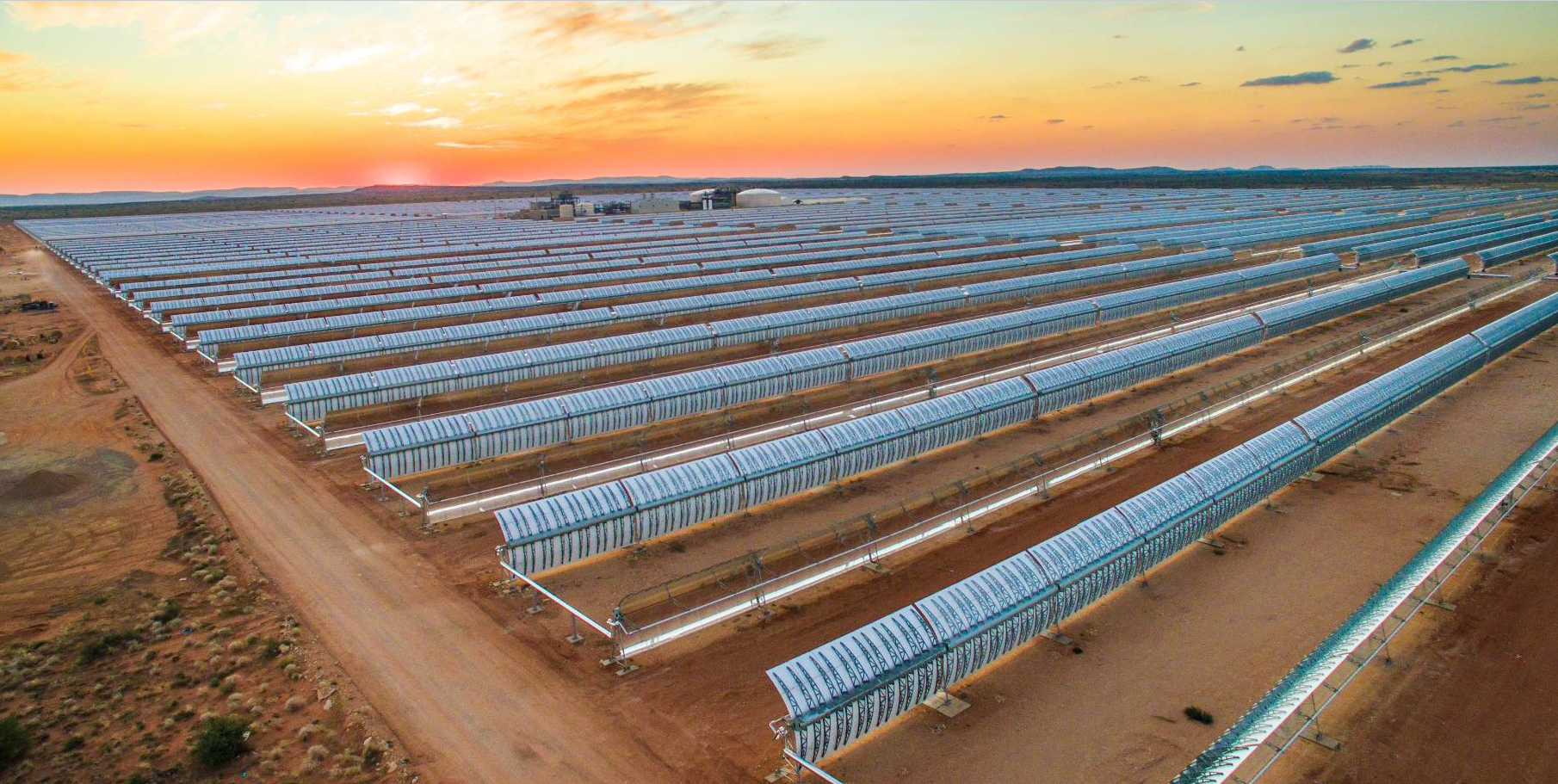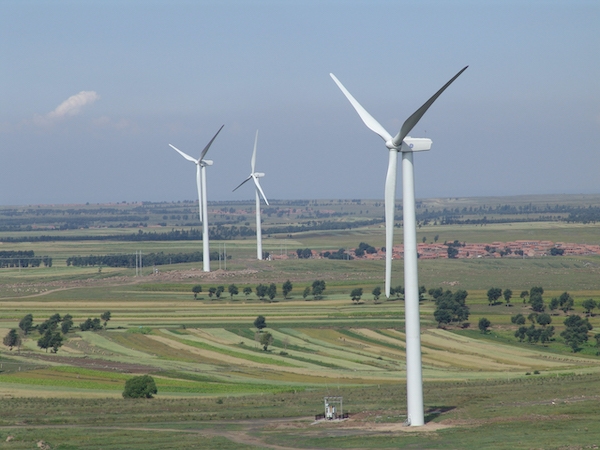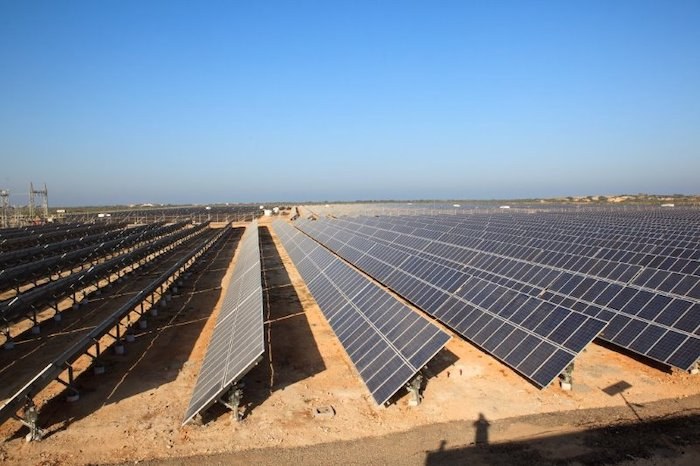Carbon credits assign a monetary value to the amount of carbon dioxide (CO2) or its equivalent in other greenhouse gasses (CO2e) that businesses or governments emit. When an organization purchases a carbon credit, it represents the reduction or removal of one tonne of CO2e from the atmosphere. This purchase grants the organization permission to emit an equivalent amount of CO2.
The funds from these credits support various carbon reduction or removal projects, which prevent or eliminate comparable amounts of CO2 from the atmosphere. These projects rely on the revenue from carbon credit sales to sustain their operations and undergo independent audits to verify the actual amount of emissions they have avoided or reduced.
This system enables high-emitting companies with climate strategies to finance projects that actively combat climate change. By compensating for their greenhouse gas emissions through these projects, they contribute to a net reduction in global emissions, resulting in a positive environmental impact as they work towards decarbonization.
Did you know? You can purchase carbon credits directly from our online store, selecting from a range of carefully curated portfolios that support verified climate action projects. Explore our Carbon Credits Store to find the right solution for your sustainability goals.
Many large companies and governments are pledging to achieve net zero by the middle of the century, or sooner. Net zero essentially means these organizations are to emit zero greenhouse gasses. The road to achieving this requires decarbonization on a large scale, everything from supply chains to internal processes have to be considered and, in most cases, changed from the ground up. Our reliance on fossil fuels has left almost no part of our globalized economy untouched.
Carbon credits can be a bridge, of sorts, for organizations that are high emitters of greenhouse gasses but for various reasons cannot easily reduce or eliminate their emissions right away. Certain industries like the energy sector, transportation, and agriculture for example will find it harder to decarbonize just by the nature of how they operate.
If we are to limit the warming of global temperatures to under 2 degrees Celsius from preindustrial levels, as set out by the Paris Agreement, we have to use every tool in the toolbox available and be creative in our solutions. Carbon credits offer a mutually beneficial option to the climate change problem.
Carbon credits are utilized by a wide range of entities, including:
Corporations and Businesses. Many companies, especially those with high carbon footprints such as manufacturing, energy, aviation, and shipping industries, purchase carbon credits to offset their emissions. This helps them meet corporate social responsibility goals and comply with environmental regulations.
Governments and Municipalities. National and local governments may use carbon credits to meet international climate commitments, such as those outlined in the Paris Agreement. They also support projects that reduce emissions and promote sustainable development.
Non-Governmental Organizations (NGOs) and Non-Profits. Environmental NGOs and non-profits may purchase carbon credits to offset their operational emissions and to support projects that align with their mission to combat climate change and promote sustainability.
Individuals. Some individuals choose to purchase carbon credits to offset their personal carbon footprints, such as emissions from travel, home energy use, or other activities, as part of their commitment to reducing their environmental impact.
Investment Funds and Financial Institutions. Investment funds and financial institutions may trade carbon credits as part of their investment portfolios, seeing them as a way to invest in the growing market for sustainable and environmentally friendly projects. They also advise clients on using carbon credits to mitigate risk and enhance sustainability credentials.
Universities and Educational Institutions. These institutions often buy carbon credits to offset emissions from their campuses and operations, promoting sustainability and environmental responsibility as part of their educational mission.
Contact us to learn how you can purchase high integrity carbon credits and offset with us today.
The top buyers of carbon credits mainly come from these key industries: manufacturing, fossil fuels, services and transportation.
Major purchasers of carbon credits include:
Organizations purchase carbon credits for a number of reasons:
Offsetting Emissions:
To compensate for unavoidable greenhouse gas emissions by supporting projects that reduce or remove an equivalent amount of CO2 from the atmosphere. This helps them achieve carbon neutrality.
Corporate Social Responsibility (CSR):
To demonstrate a commitment to sustainability and environmental stewardship. Buying carbon credits can enhance an organization's reputation and show stakeholders that they are taking proactive steps to combat climate change.
Investor and Customer Expectations:
To meet the growing demands from investors, customers, and other stakeholders who prioritize environmental responsibility. Companies that invest in carbon credits can attract eco-conscious investors and consumers. Recent studies have found that consumers are willing to pay more for a net zero product. While some 80 percent of people have said they will change their purchasing habits to ensure they only buy products with a low carbon footprint.
Incentivizing Internal Emission Reductions:
By putting a price on carbon, organizations can create a financial incentive to reduce their own emissions. This internal cost can drive efficiency improvements and the adoption of cleaner technologies.
Supporting Sustainable Development:
To contribute to projects that provide social and environmental co-benefits, such as improved air quality, conservation of biodiversity, and support for local communities. These projects often have positive impacts beyond carbon reduction.
Regulatory Compliance:
To meet legal requirements or regulations that mandate reductions in carbon emissions. Some jurisdictions have cap-and-trade systems where companies must purchase credits if they exceed their emission allowances.
Risk Management:
To hedge against future regulatory risks or market changes. By investing in carbon credits, organizations can prepare for stricter emission regulations and potential financial penalties for exceeding carbon limits.
Market Leadership:
To position themselves as leaders in sustainability within their industry. This can differentiate them from competitors and create a competitive advantage in markets where sustainability is a key concern.
By purchasing carbon credits, organizations can play a pivotal role in global efforts to reduce greenhouse gas emissions and promote sustainable practices.
Our research on the climate commitments of the Fortune Global 500 found that reducing emissions pays off both environmentally and financially: companies that reduced reported emissions year over year earned on average nearly $1 billion more in profit per company than their Fortune Global 500 peers.

Whether you're a business or an individual, purchasing high-quality carbon credits is a powerful step toward reducing your environmental impact. Explore our Carbon Credits Store to find the right solution for your sustainability goals.
It is not a surprise that the largest buyers of carbon credits mainly come from a handful of industries: aviation, energy, tech, and transportation. All of these have historically consumed enormous amounts of fossil fuels.
Take for instance the aviation sector. Flying is one of the most carbon-intensive activities a person can do. Planes emit nearly 100 times more CO2 per hour than a shared bus or train ride. Across the globe there are on average 97,692 commercial flights every single day. Currently the technology does not exist to keep the aviation sector at the same capacity as it is now while emitting no CO2. Zero emissions aircraft, such as hydrogen or electric planes, will be available at scale one day but we are still a long way off from achieving that. So, what are aviation companies to do in the meantime?
We cannot simply stop flying either or limit the number of planes in the sky. Aside from tourism, planes are used for all sorts of essential purposes: to provide medical aid, to transport goods and cargo, or for the military.
Purchasing carbon credits to offset the unavoidable emissions produced by planes is a good way to negate them. It allows for a net benefit while buying time for renewable-based technology to advance to a standard where it can be used at the scale required.
There are many other examples like this. Just because an industry produces unavoidable CO2 emissions does not mean there is nothing that industry can do. Purchasing carbon credits can help these companies reach their net zero goals.
There has been some criticism levied at those companies that buy carbon credits, arguments that this simply kicks the carbon can down the road and offers a license to pollute.
A report from Ecosystem Marketplace found that companies that buy carbon credits are doing more to lower their carbon footprint than those that do not. This report found that these companies are twice as likely to reduce their emissions and are doing more to address climate change in their supply chains and processes.
The IPCC's latest report highlights that carbon credits can be a valuable tool in global decarbonization efforts by enabling the offsetting of emissions and supporting climate mitigation projects. However, it emphasizes that carbon credits should complement, not replace, direct emission reduction strategies to ensure meaningful and long-term climate action.
At Climate Impact Partners, we believe that high-quality carbon credits are a crucial component of an effective climate strategy, simply put carbon credits work. After measuring their carbon footprint, organizations and individuals should focus on minimizing their emissions as much as possible, and then take responsibility for the remainder by purchasing carbon credits. Buying carbon credits enables immediate action to reduce global emissions while your company works on developing low or zero emission solutions.
Looking to take action? You can purchase verified carbon credits from our Carbon Credits Store to support climate-positive projects today.
The money used to buy carbon credits goes towards financing projects by various organizations that work to reduce human-produced CO2 in the atmosphere. These organizations sell carbon credits by engaging in activities such as planting trees, conserving forests, finding more sustainable ways of producing goods and services, developing technologies for carbon removal, and creating more efficient products like water filtration systems, cookstoves, and solar panels.
The following are some of the more typical examples of carbon credit projects:
Nature based carbon credits like afforestation, reforestation, grassland restoration, and enhanced forest management. These projects focus on preserving and enriching biodiversity to maintain our planet's health. They involve planting new trees, rehabilitating native vegetation, and managing forests sustainably to capture and store carbon. By protecting existing ecosystems and restoring degraded lands, these initiatives prevent carbon release and actively sequester CO2 from the atmosphere. They also offer additional benefits such as improving water quality, enhancing soil fertility, and supporting local communities through sustainable land use practices.

Health and livelihood programs such as the distribution of clean cookstoves and water filtration systems. These projects help communities reduce indoor air pollution, access clean water, and improve household incomes while also lowering global emissions. Clean cookstoves replace traditional open fires with more efficient, low-emission alternatives, cutting down on biomass fuel use and CO2 emissions. Water filtration systems decrease the need to boil water, further reducing fuel consumption and emissions. These programs often target communities that are most vulnerable to climate change impacts, providing them with healthier living conditions, conserving resources, and creating economic opportunities.

Sustainable infrastructure projects aimed at accelerating the transition to renewable energy and reducing reliance on fossil fuels. These large-scale technological solutions tackle the main sources of global emissions, focusing on lowering the carbon footprint of energy production, transportation, and industry. Examples include the development of solar and wind energy farms, the adoption of energy-efficient technologies, and the establishment of sustainable public transportation systems. By investing in renewable energy, we can cut greenhouse gas emissions from power generation, while sustainable transportation projects reduce vehicle emissions. These infrastructure enhancements not only mitigate climate change but also stimulate economic growth and create jobs in the burgeoning green economy.

While the cost of a carbon credit can vary depending on a variety of factors, typically a single carbon credit can represent one tonne of CO2 removed from the atmosphere.
The carbon credit market of course fluctuates like any other and is driven by supply and demand. The price can depend on the availability of credits from a specific region and the quality of a specific project.
The projects creating carbon credits must undergo rigorous standards and checks in order to be considered ‘high-quality’. Projects have to provide evidence of the CO2 they have either eliminated or prevented from entering the atmosphere. These checks are overseen by various independent third-party bodies which establish there are no inconsistencies or errors in the evidence they provide.
Projects must be able to prove:
High quality carbon credits often have co-benefits as well. They not only mitigate climate change but also promote sustainable development, protect biodiversity, and can provide local communities with improved air and water quality, enhanced infrastructure, and increased job opportunities.
The voluntary carbon market is open to individuals, companies, governments and any organization that is seeking to lower its carbon footprint and support the fight against climate change in a meaningful way.
An individual could purchase a climate credit, say, if they wanted to offset a long-haul flight or other high-emission activity. They could also purchase credits on an ongoing basis to compensate for their personal carbon footprint.
Of course, it is businesses that are the biggest contributors to greenhouse gas emissions. Businesses also have the resources to buy the most carbon credits and make the biggest difference.
We adeptly match clients with projects aligned with their goals and values, while providing our project partners with the necessary finance to deliver measured and verified results. We can also skillfully blend credits into customized portfolios that effectively meet companies' complex and growing requirements.
Contact us to learn how you can offset with us today.
There are a number of accredited third-party independent bodies that verify the quality of carbon credits. Firstly, project developers carry out the activity that reduces greenhouse gasses and generates the credits. They then must provide evidence of the amount of CO2 that was either removed or prevented from entering the atmosphere. That typically takes the form of monitoring data, project reports, or other relevant documentation.
This data is then assessed by multiple third-party verifiers, they will check for any inconsistencies or errors. The credits are then entered into a registry which contains all the important information: their methodology, geography, standard, vintage, and date of issuance.
There are several internationally recognized standards, and we only use those approved by the International Carbon Reduction and Offset Alliance (ICROA). These are the Verified Carbon Standard (VCS), Gold Standard, the American Carbon Registry (ACR), Climate Action Reserve (CAR), Plan Vivo and Woodland Carbon Code.
At an international level carbon credits are regulated by the United Nations Framework Convention on Climate Change (UNFCCC). This treaty signed by 198 parties establishes a basic legal framework and agreement to limiting climate change.
Article 6 stipulates how countries can trade carbon credits between themselves to help each other meet their greenhouse gas emissions reduction targets. This article also provides guidelines for the validation, verification and issuance of high-quality carbon credits as well as a vast catalog of certified climate-friendly projects.
At a national scale, carbon credit schemes are more often regulated by government bodies. For countries within the European Union carbon credits are regulated by the European Commission which oversees the EU Emissions Trading System (EU ETS). In the United States the Environmental Protection Agency (EPA) regulates a number of programs. While in the United Kingdom the UK ETS Authority - formed from the Department of Agriculture, Environment and Rural Affairs - oversees carbon pricing policies.
The carbon credits market is current valued at over USD $105 billion and is only going to grow. More than a third of the world’s 2,000 largest publicly held companies have set goals to become net zero. This will of course entail massive decarbonization efforts on their part to reduce greenhouse gasses. These companies will likely modify their processes, switch to renewables where they can, reshape their supply chains, and update equipment to be more energy efficient. While all of this will go a long way towards achieving net zero in most cases it will not be enough to eliminate emissions in their entirety. They will also have to offset their remaining emissions by investing in carbon credits.
These are some of the world’s biggest companies, they have tremendous resources at their disposal. They will be able to invest in the carbon credits market on a large scale. As such, the market is expected to grow, by some estimates, 50-fold within the decade. Morgan Stanley has projected the voluntary carbon-offset market to go from the USD $2 billion it was in 2020 to nearly $100 billion by 2030 and even possibly $250 billion by 2050. While Bloomberg has estimated the market could be valued at USD $1.1 trillion by 2050.
United Kingdom
In the United Kingdom alone the voluntary carbon market has expanded rapidly in the last few years. As demand from businesses increases and overtakes the number of greenhouse gas emissions reducing projects that exist in the United Kingdom it is likely we will see a rise in the price of carbon credits. A report from PwC found that 350 FTSE companies purchased voluntary carbon credits reaching a total of £38 million. PwC’s models estimate that those same credits will be worth roughly £135 million by 2030, a 256 percent increase. By 2050 they could be worth £365 million.
The United Kingdom is in an advantageous position to become a leader in the future carbon credits market, thanks to a strong financial and related professional services industry and strategic green policies implemented by the government. Since 2012 London has been the hub for 80 percent of global carbon trading, while in 2023 the UK government pledged to invest £20 billion in plans for a new competitive UK carbon capture, usage and storage market by 2035.

United States
The United States is attempting to reform its carbon credits market and instill more corporate support in order to facilitate its growth. The government recently released a 12-page policy document dictating that carbon credit projects must show clear reductions, avoid harming local communities, and ask companies to consider decarbonizing before purchasing credits. The policy is aimed at engendering trust in the carbon credits market and to make it more resistant to criticism.
The North American carbon credit market, which encompasses both the United States and Canada, was valued at USD $16.3 billion in 2023. There has been a steady increase in demand for carbon credits thanks to the popularity of corporate sustainability and net zero ambitions.
The United States government is clearly encouraging this growth, embracing market-driven solutions to the climate change problem.
China
China’s carbon market is more closely monitored and regulated by its government. China’s voluntary carbon trading platform - the China Certified Emission Reductions (CCER) - reopened on the 22nd of January 2024, inspiring new confidence in the country’s “30/60” goals - peak emissions by 2030 and carbon neutral by 2060. The scheme had a six-year hiatus since being paused in 2017 while the government brought its regulatory framework up to new standards.
China was also one of the first countries in Asia to introduce a national compliance emissions trading system (ETS), back in 2021. This system is one of the largest in the world in terms of the sheer number of emissions it covers. It accounts for roughly 40 percent of all of China’s carbon emissions. This is taken primarily from the country’s power sector.
China’s national compliance carbon market stipulates that CCERs are allowed to include 5% of an emitter’s compliance obligations. Because of this it is estimated that CCER credits could be as large as 350–400 million tonnes per year.
China’s compliance carbon market has plans to expand beyond the power sector to include other big emitting industries, such as petrochemicals, chemicals, building materials, steel, nonferrous metals, paper, electric power, and aviation. Once that happens it will cover a huge 7–8 billion tonnes of emissions every year.
Hong Kong is also being developed as a carbon trading hub, a place where international investors can purchase credits from China.
Central and South America
It is no surprise that the region that includes the world's largest rainforest generates more than 20 percent of all carbon credits. Latin America continues to see growth in its carbon markets year after year, while countries like Colombia have introduced carbon taxes and carbon pricing mechanisms.
The tropical rainforests of Latin America are the world’s largest carbon sinks -, investing in them, growing and maintaining their biodiversity presents ample opportunity for the generation of carbon credits.

Carbon credits are regarded as intangible assets which is an asset that lacks a physical substance. Other examples of intangible assets are things like patents, copyrights, franchises, goodwill, trademarks, and trade names. Companies thinking in the long-term are already transforming carbon from a liability to an asset, adding carbon to their balance sheets.
The carbon credits market is susceptible to the same metrics of supply and demand as any other and as the demand for carbon credits continues to rise it is likely their value, and price, will as well.
As carbon credits are becoming recognized and mandated internationally their worth is only becoming more transparent. Carbon credits will grow in value and in demand while further regulation and scientific breakthroughs ensure their quality and standards will become more assured.
Governments across the globe are backing the carbon credits market, creating new regulatory bodies and incentives for projects and schemes. In addition, new projects and new technologies are creating opportunities for investment.
Our net zero future is within grasp, and carbon credits will help us achieve it.
Ready to make an impact? Visit our Carbon Credits Store to explore our carefully curated portfolios and support projects that drive real climate action.
Decarbonization is crucial to safeguarding the future of our planet, as it ...

We need carbon accounting to quantify and manage greenhouse gas emissions, ...

Carbon neutral and net zero are two terms often used interchangeably, but t...
